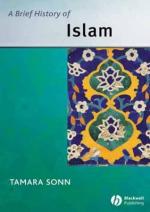|
This section contains 668 words (approx. 3 pages at 300 words per page) |

|
Varied Landscapes. Muslim rulers presided over an increasingly vast region of diverse land forms, climates, soils, wildlife, and vegetation, extending from North Africa and Spain to the borders of India. Geography affected concentrations of populations and helped define the borders of successive ruling groups. From Madinah, the early Muslims expanded into the Fertile Crescent, an agricultural zone arching from Egypt north into Syria, across Iraq and Iran and down toward the Persian Gulf, incorporating several key river systems such as the Nile, Orontes, Tigris, and Euphrates. The Umayyads and Abbasids inherited this prosperous irrigable region where grains, vegetables, and fruits could be grown and goods from across the hemisphere could be traded.
Breakdown of Centralization. However, the centralized empire was short-lived, as various rulers vied with each other for regional control. In 756 a lone Umayyad prince, Abd al-Rahman, claimed al-Andalus (Andalusia, a portion of...
|
This section contains 668 words (approx. 3 pages at 300 words per page) |

|




